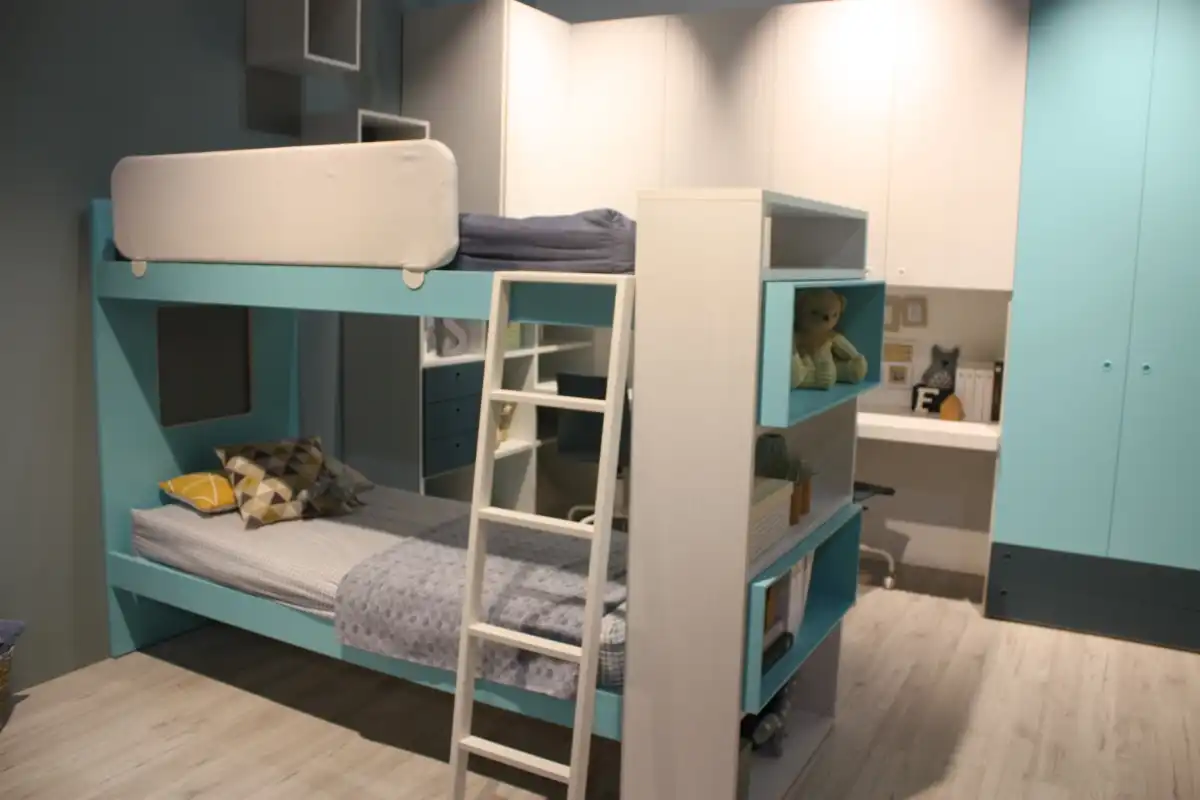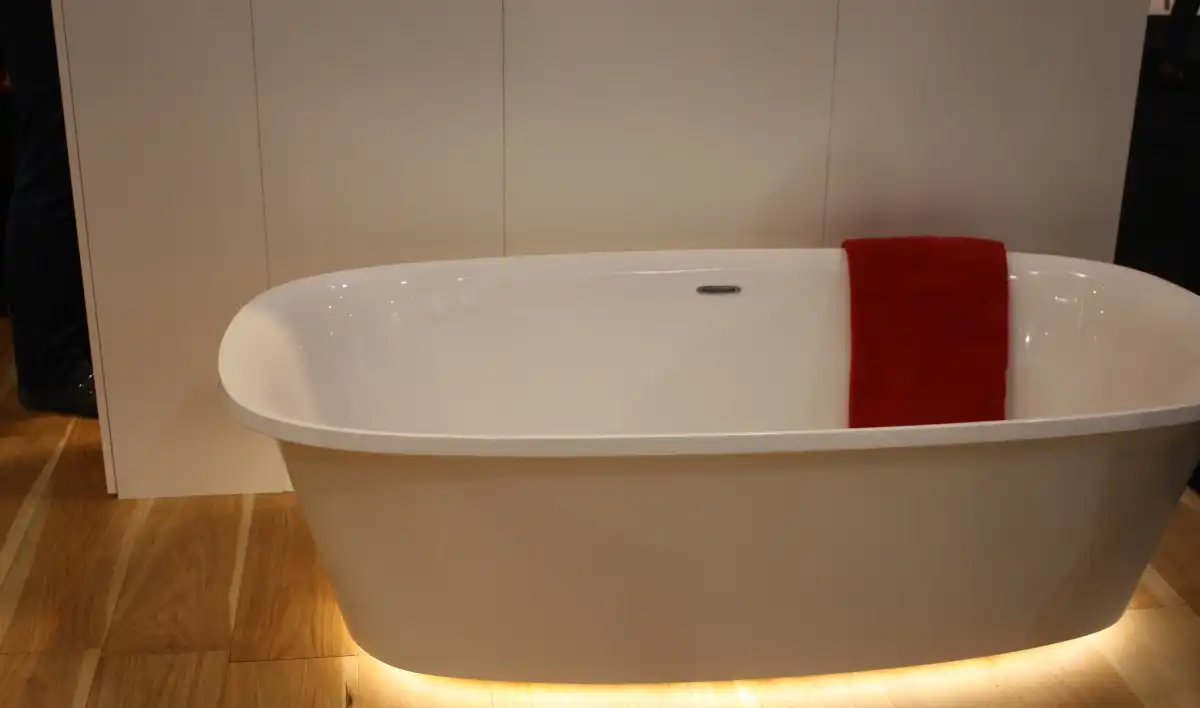Decorating a small space presents both a challenge and an opportunity. It is the opportunity to strike a balance between functionality and aesthetics within a limited space, ensuring that every inch of the room counts.

Thoughtful use of color, strategic arrangement of furniture, and careful use of decor are some ideas you can use to enhance your small spaces to make them feel more spacious but also cozy and inviting. Whatever your exact approach, the main idea is to embrace creativity in the design of the room and use the limitations of a small space to create something truly unique.
No matter if you have a studio apartment or just want to revamp your extra small bedroom, these ideas for decorating small rooms can help you make the most of the space you have.
Understand How Color Impacts the Feel of the Room

Most decorating articles will advise you to paint your small room white or other light colors to maximize the airy feel of the space. This method works well if that is the look you want to achieve because light colors reflect more light and increase the sense of openness and spaciousness in your small room.
Dark colors, such as deep blues, greens, and grays, can, however, work well in small rooms to add depth and coziness. While dark colors can make a room feel smaller, they also provide a dramatic, enveloping effect that adds warmth and personality. The key is to understand the atmosphere you want to create before you choose a color palette for your small room.
Maximize the Use of Vertical Space

Maximizing vertical wall space is an essential design element for making the most of small spaces. You can use this vertical space for storage by installing tall shelving units, cabinets, or wall-mounted storage to free up valuable floor space.
Store books, plants, and decor that will add texture, color, and depth to your space, or install functional coat and bag hooks to keep them accessible and organized. Even if you do not need the storage, options like this, as well as oversized wall art or gallery walls, can draw the eye upward and make the space feel larger.
Choose Multi-Functional Furniture

Selecting multi-functional furniture will allow you to use fewer pieces overall. Options like a sofa that converts into a bed or a dining table that becomes your desk can help you make even the tiniest living quarters more functional. This does not mean that you have to compromise on style.
There are many great options for double-duty furniture, such as sofa beds, storage ottomans, extendable dining tables, Murphy beds, storage coffee tables, desk/bookshelf combos, and stool/side tables. When purchasing multi-functional furniture, it is best to choose high-quality pieces that will last for many years in their dual capacities.
Utilize Floating Furniture When Possible

Floating furniture options, like desks, dining tables, nightstands, and consoles, have no legs and are mounted directly on the wall. Like vertical storage, floating furniture frees up floor space, giving you more room to move around the room. Because there is more visible floor space, furniture mounted above the floor tricks the eye, giving the impression that the room is larger. These pieces have the added benefits of helping the room to look less cluttered and being easier to clean around.
Even if you don’t want to use furniture that is mounted to the walls, utilizing pieces that have visible space below can make the room feel less heavy and more spacious.
Install Mirrors

Mirrors are lovely in any setting, but they are especially useful in small rooms because they make cramped spaces appear larger. Mirrors reflect the surrounding area and light, brightening a room and reflecting views that add depth to a small space.
Mirrors, in particular, placed next to or across from a window will significantly increase the amount of light and create a sense of open space. Choosing a mirror that resembles a work of art will not only enhance the style of a small room but will also draw attention away from its size. Even though it may seem counterintuitive, large mirrors can be stunning and dramatic in small rooms.
Create Distinct Zones

It might feel more natural to design a small room as one complete open area, but it is often more effective to create distinct zones, particularly in areas that are multi-functional. By defining zones for various activities, like working, resting, and eating, you can make the entire room feel more purposeful. In addition, it can help to organize the layout of the room and guarantee that every task has a designated area for optimal performance.
Þú getur búið til sérstök herbergissvæði með stefnumótandi húsgögnum, mottum og ígrundaðri lýsingarhönnun. Til dæmis getur það að setja litla gólfmotta undir skrifborði skilgreint það frá stærra stofunni, en lampi yfir stól mun skapa notalegan lestrarkrók.
Fínstilltu vannýtta króka

Small nooks and corners are often overlooked in room designs because they do not appear large enough to be useful, but in small rooms, this space is especially valuable. With a little imagination, you can turn these underutilized nooks and crannies into functional spaces. Challenge yourself to think creatively and see each small space in a new light so that you can adapt it to better meet your needs.
For example, a small alcove can be converted into a small office space, or a corner can be turned into a reading nook. Even a window sill can be used to store books, plants, or other small decorative items.
Hafðu útlitið sveigjanlegt

Flexibility is essential in small rooms because the space often has to serve multiple people and purposes. With this in mind, arrange your furniture in a way that allows it to be easily moved for other activities or functions.
Fyrir utan stóra, hefta hlutina þína, veldu nokkra létta og einingavalkosti sem þú getur fært um ef gestir koma eða þú þarft að endurstilla herbergið fyrir annan viðburð. Hægt er að geyma samanbrjótanleg skrifborð og fellanlega stóla þegar þeir eru ekki í notkun. Hægt er að draga út hægðir eða púða sem hægt er að geyma undir stofuborði til að auka sæti í herberginu.
Prioritize Wall and Ceiling Mounted Lighting

Í litlum rýmum er gólfpláss takmarkað, þannig að það er áhrifarík aðferð að nota vegg- og loftljós til að losa um pláss. Öfugt við gólflampa veita vegglampar, hengiljós, ljósakrónur og innfelld lýsing næga lýsingu á sama tíma og þau taka lítið gólfpláss.
This idea not only maximizes floor space, but it also contributes to a cleaner, less cluttered appearance. The use of wall- or ceiling-mounted lights also results in fewer table lamps, freeing up table space for other room essentials.
Haltu yfirborðinu hreinu

Maintaining clear surfaces is a good practice in all rooms, but it is especially vital in small room spaces. Crowded surfaces like countertops, coffee tables, desks, nightstands, and dressers can make a small room feel chaotic and visually overwhelming.
Settu naumhyggju í forgang með því að sýna aðeins nauðsynlega eða þýðingarmikla hluti á yfirborðinu þínu. Notaðu þægilegar geymslulausnir eins og körfur, bakka, bakka og skúffur til að halda öðrum hlutum þínum skipulagðum og úr vegi á meðan þeir eru enn aðgengilegir. Það er nauðsynlegt að tæma reglulega til að viðhalda tæru yfirborðinu.
Use Large Rugs

Andstætt því sem almennt er talið munu stórar mottur láta lítið herbergi líta út fyrir að vera stærra og samhæfara en undirstærð gólfmotta. Stór gólfmotta getur fest tiltekið svæði og skapað tilfinningu fyrir einingu. Veldu gólfmotta sem nær undir fótum húsgagnanna á tilteknu svæði frekar en gólfmottu sem afhjúpar gólfið. Þetta útilokar ekki notkun smærri motta til að skilgreina ákveðin svæði; frekar, það þýðir einfaldlega að hverju svæði ætti að fá viðeigandi teppastærð.
Vary the Size of Your Furniture

Some design advice for small rooms may include using small-scale furniture to ensure that there is enough open space in the room. While it is critical to leave open spaces for the eye to rest, that does not mean you should never use large pieces in a small room. Using large, statement pieces can help the space feel more grounded, dynamic, and thoughtfully designed.
For example, pairing a slim coffee table with a substantial sofa will keep the room from feeling boring or underdecorated. Choose your pieces carefully while keeping your space in mind. Make sure to measure the room to ensure that all of your desired furniture will fit. Drawing a physical model of your room and laying out different furniture options can help you plan the best arrangements of large and small pieces before purchasing them.
If you like our page please share with your friends & Facebook